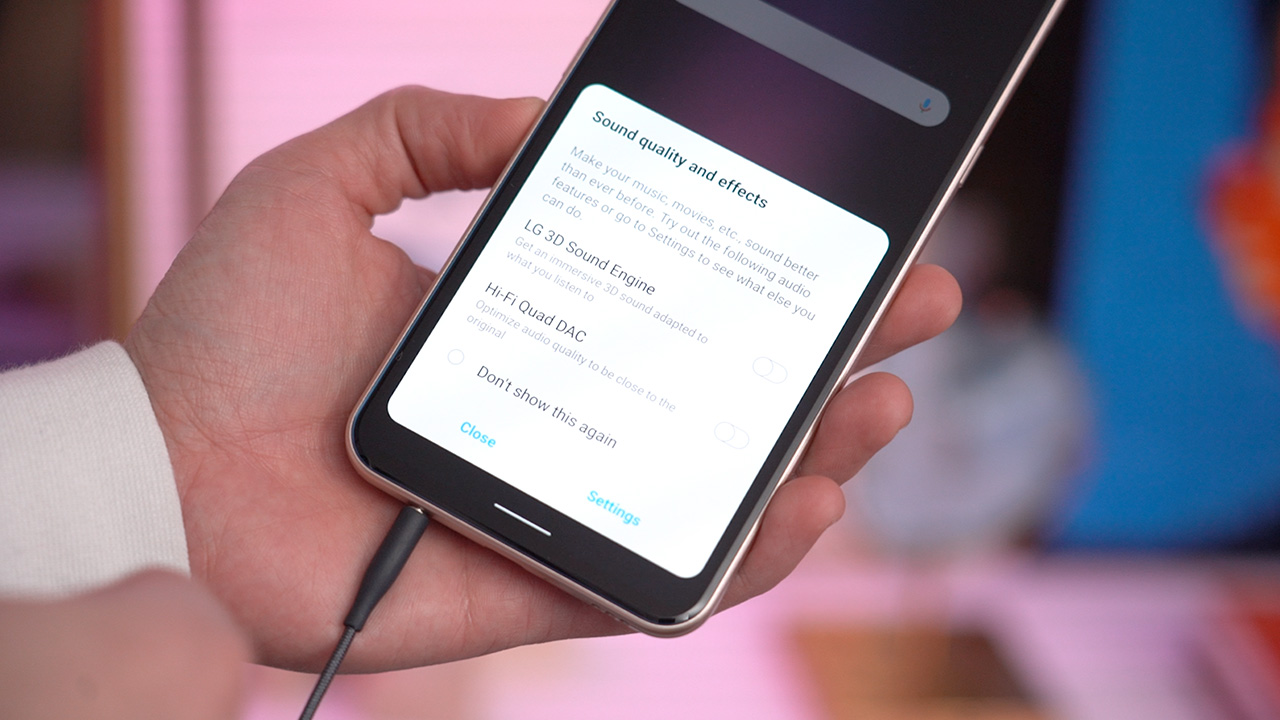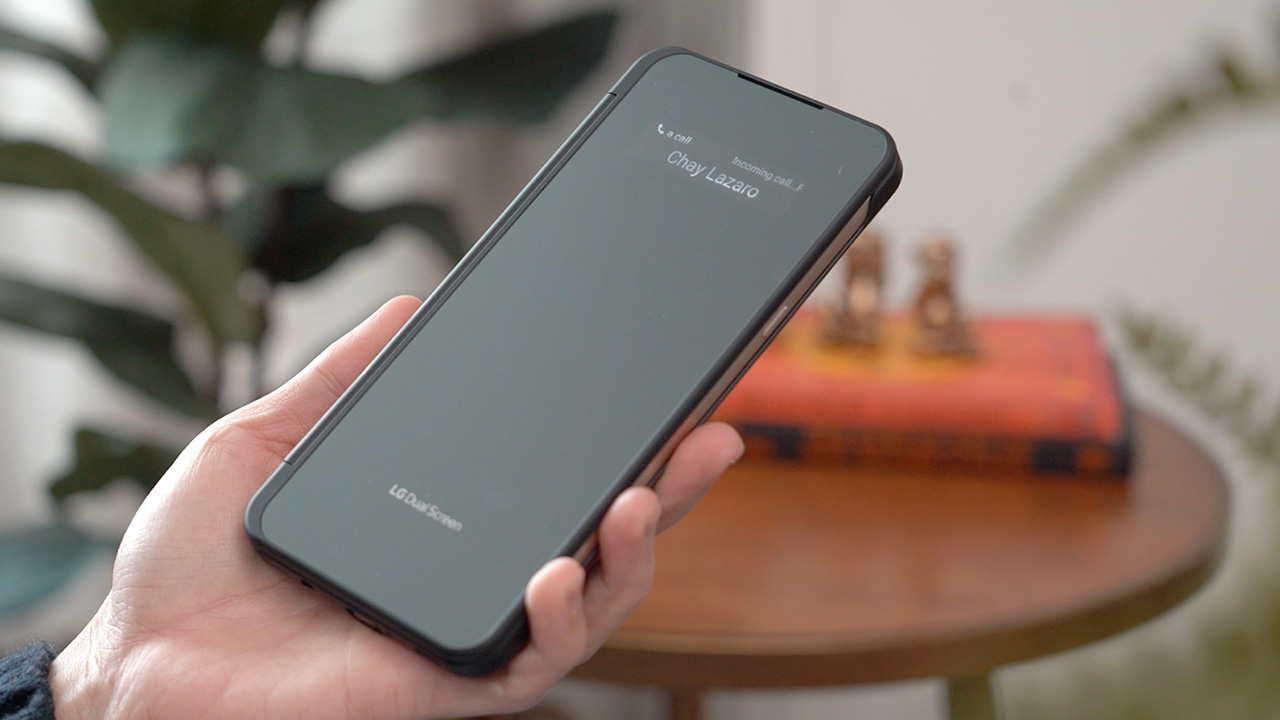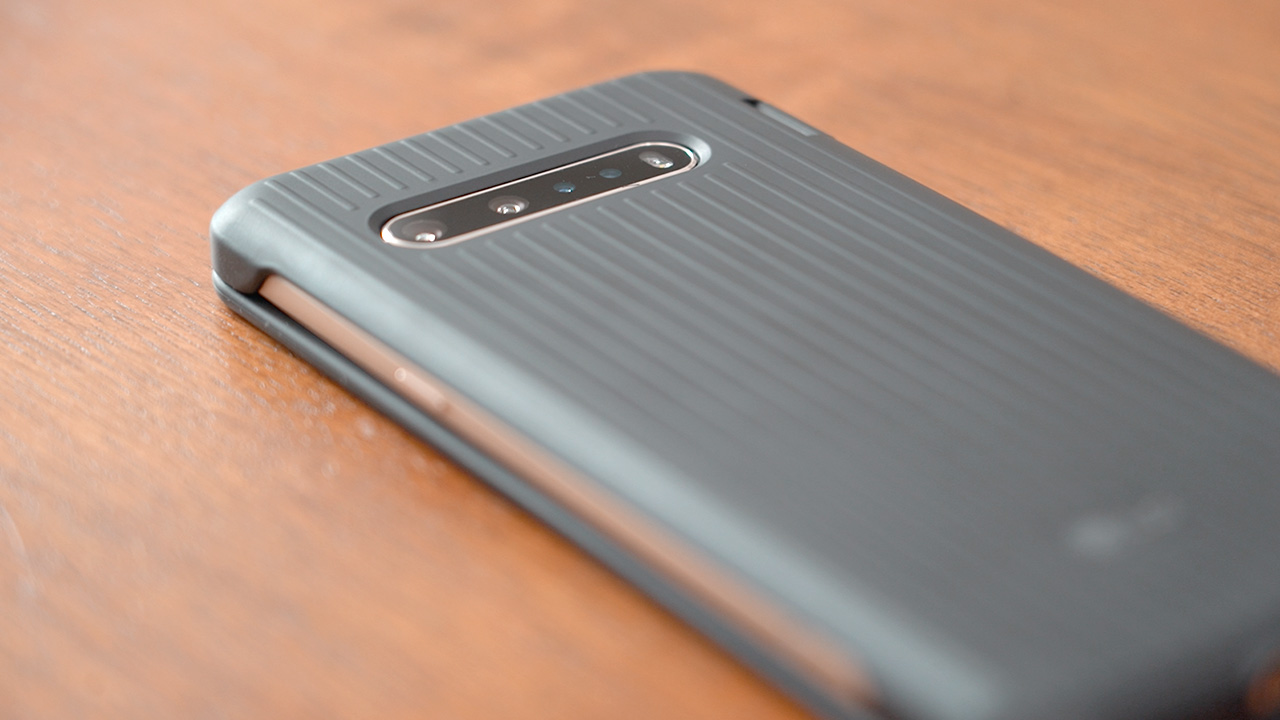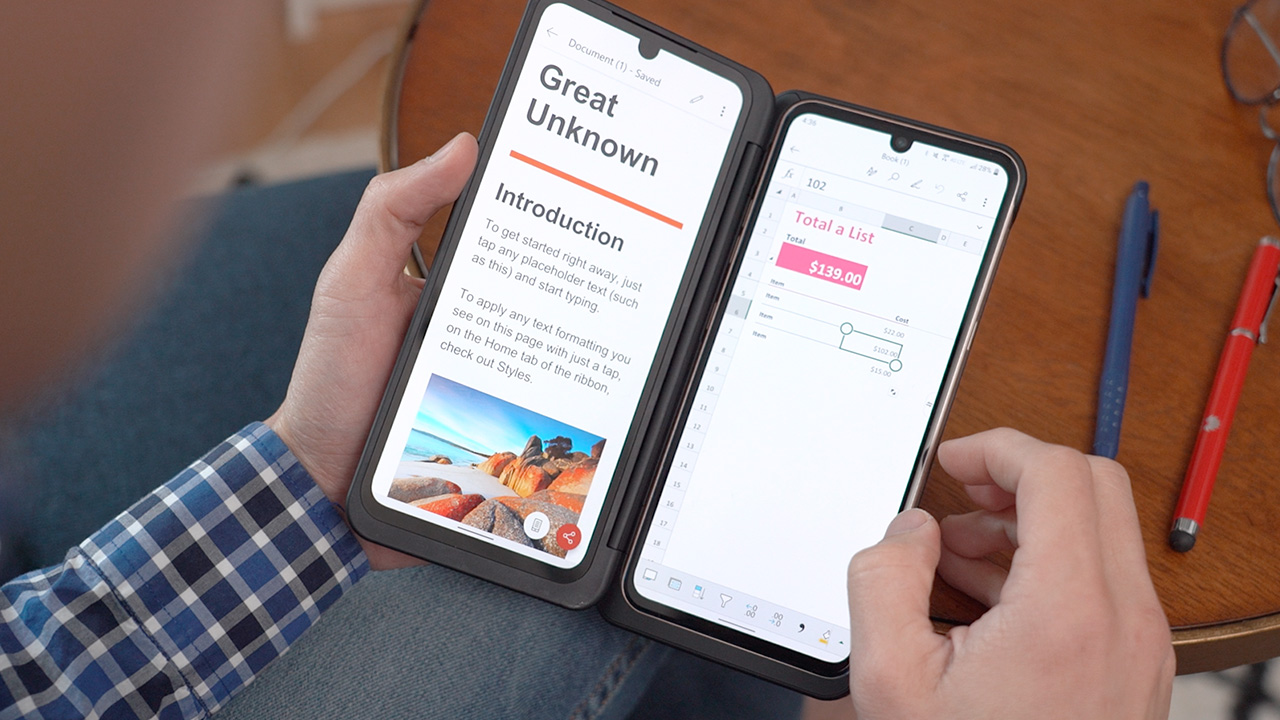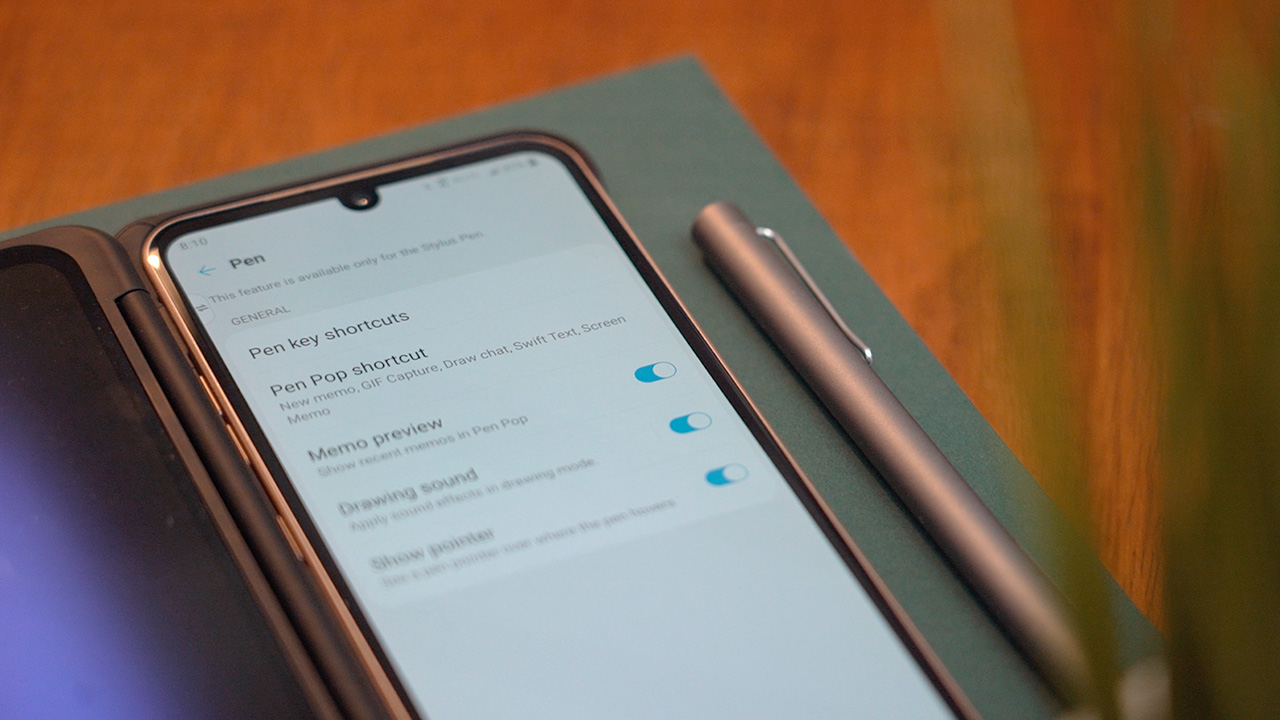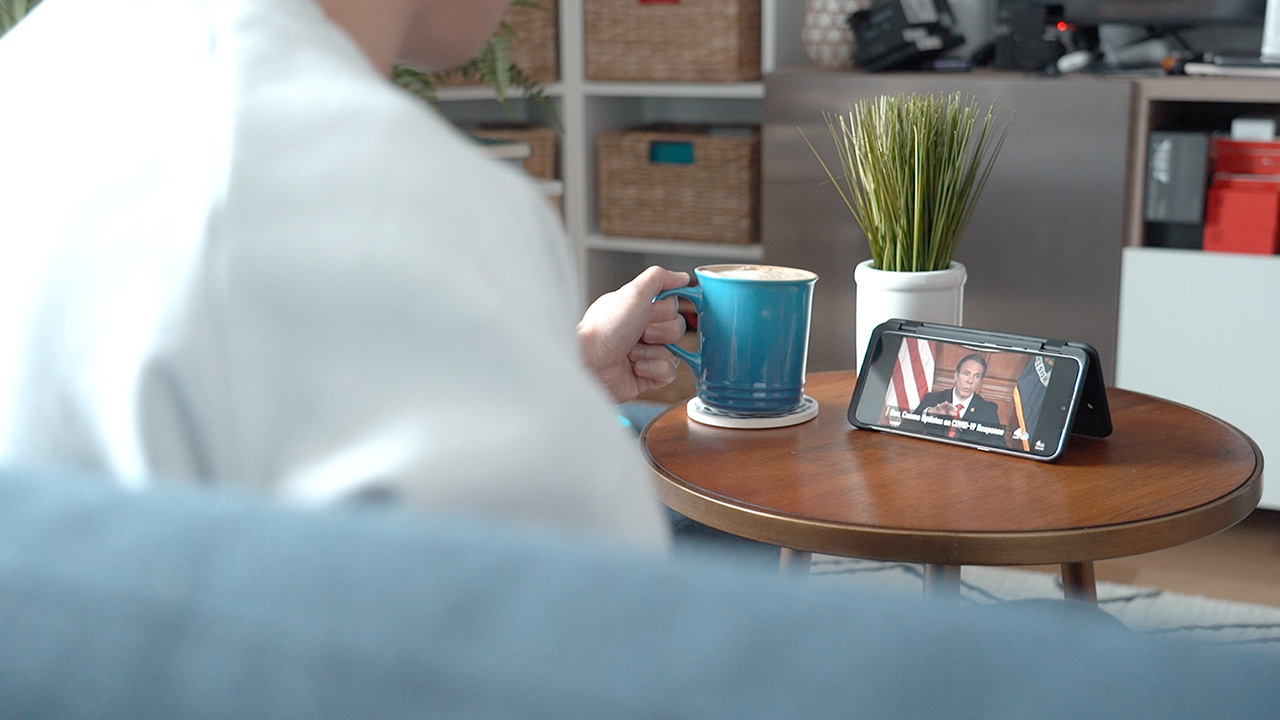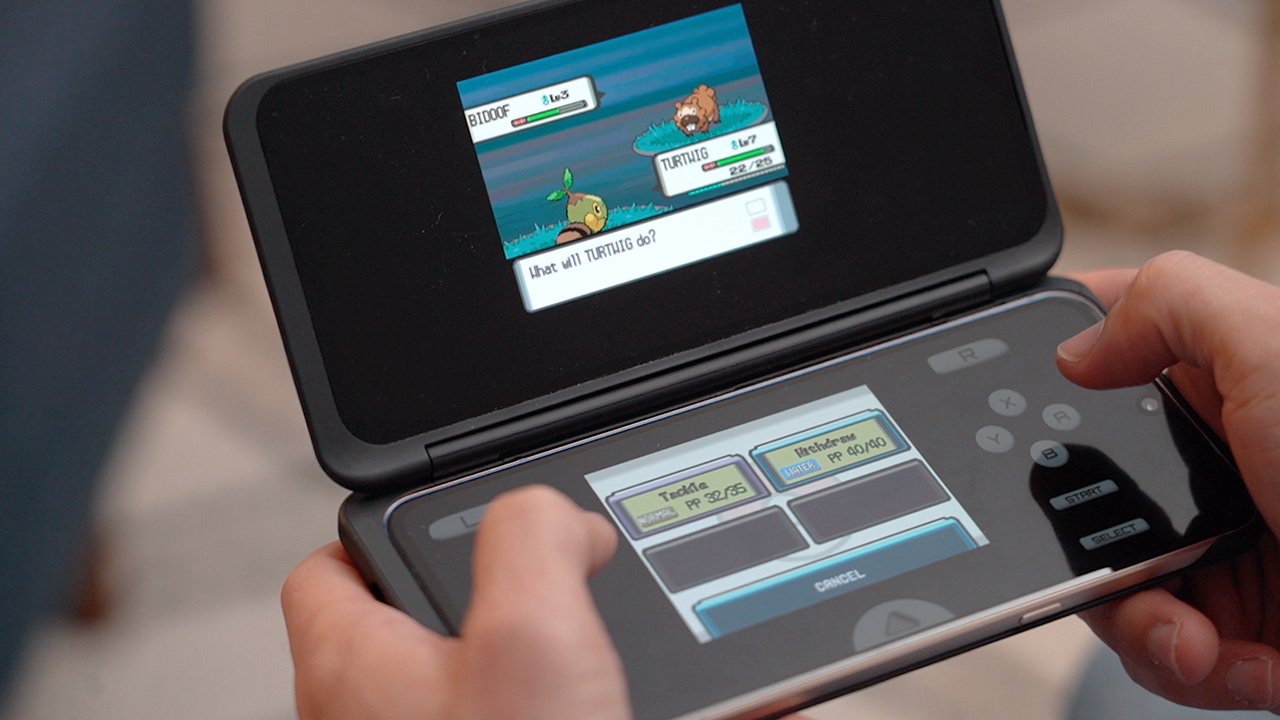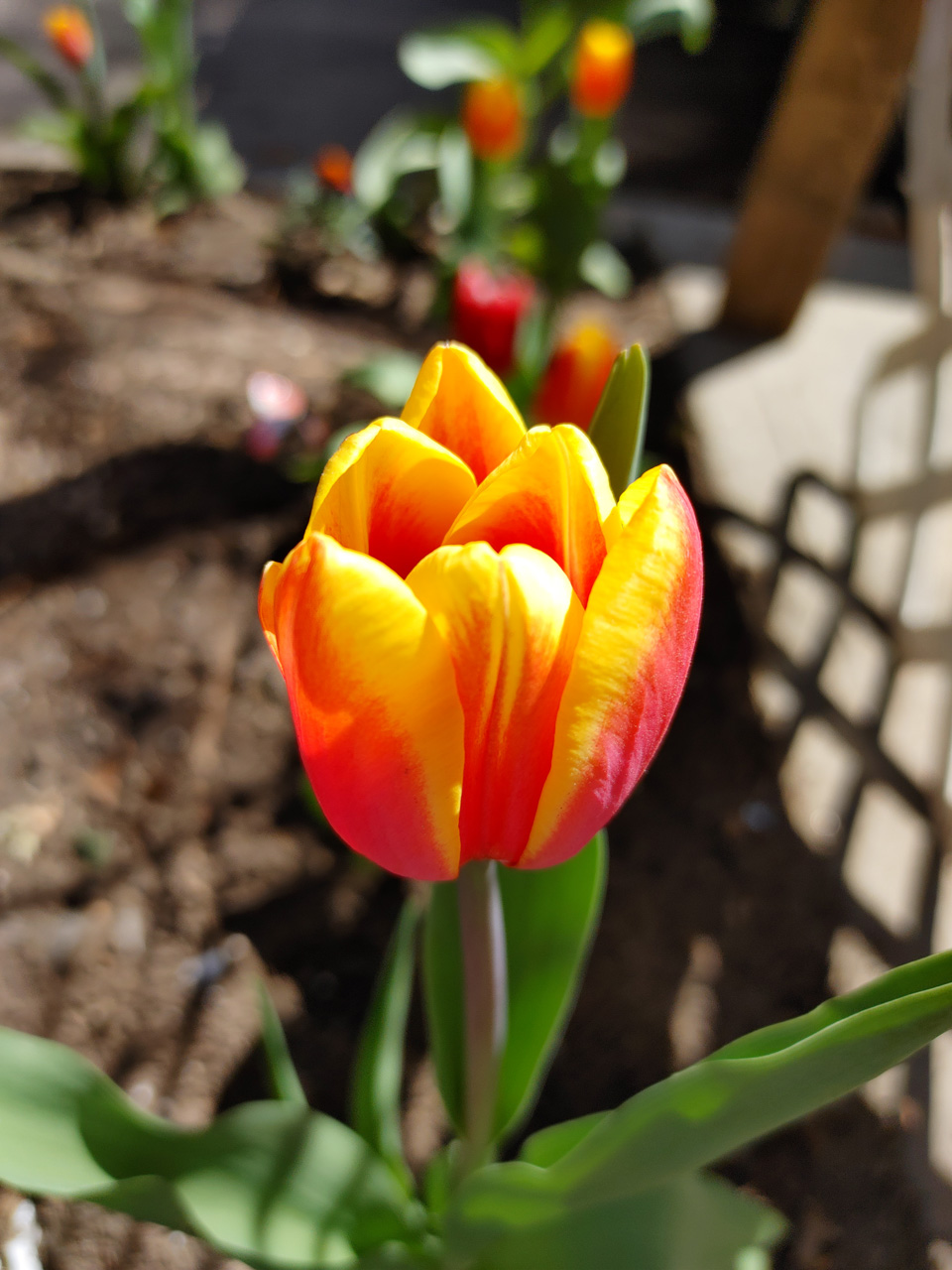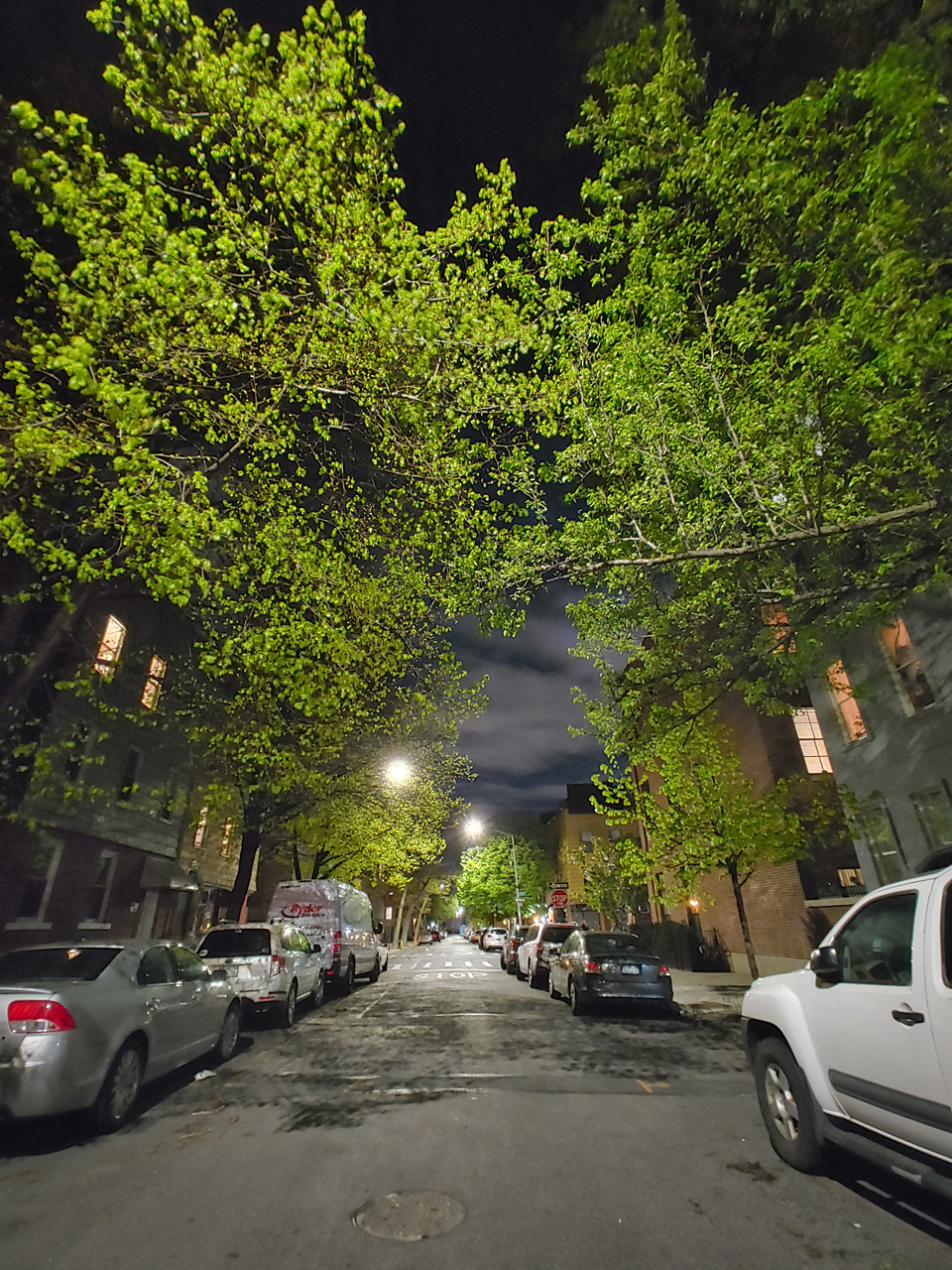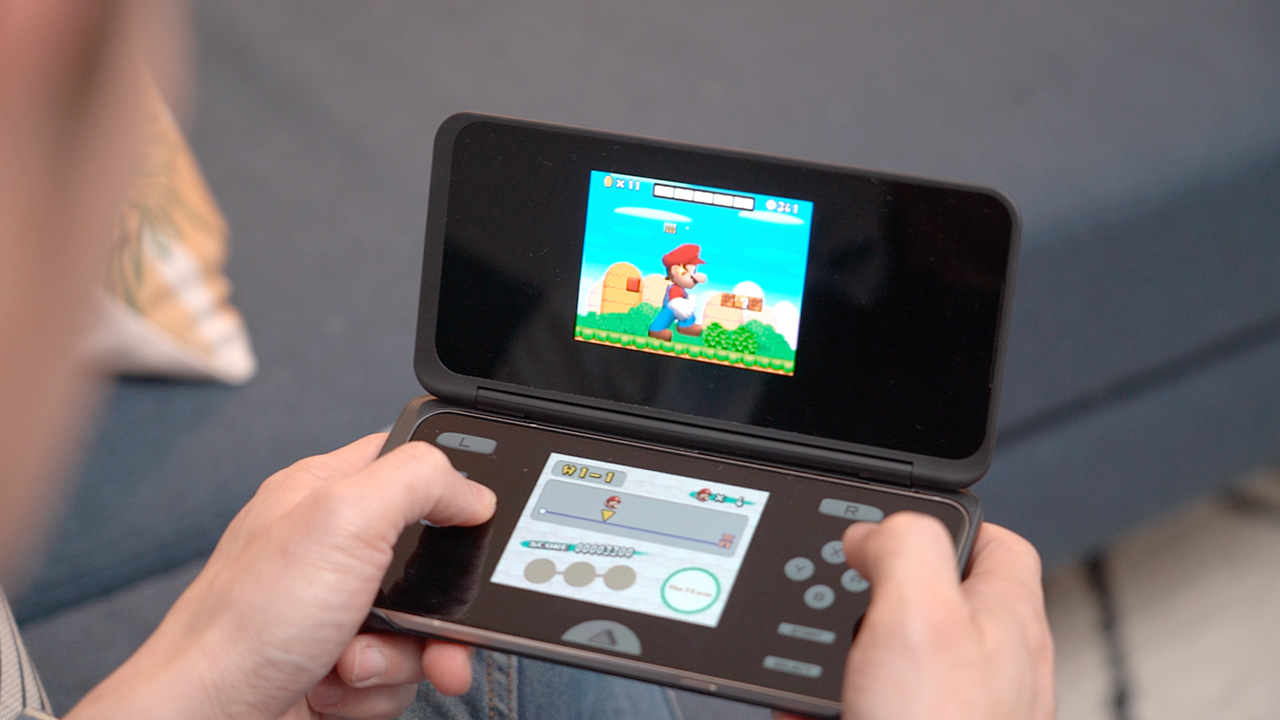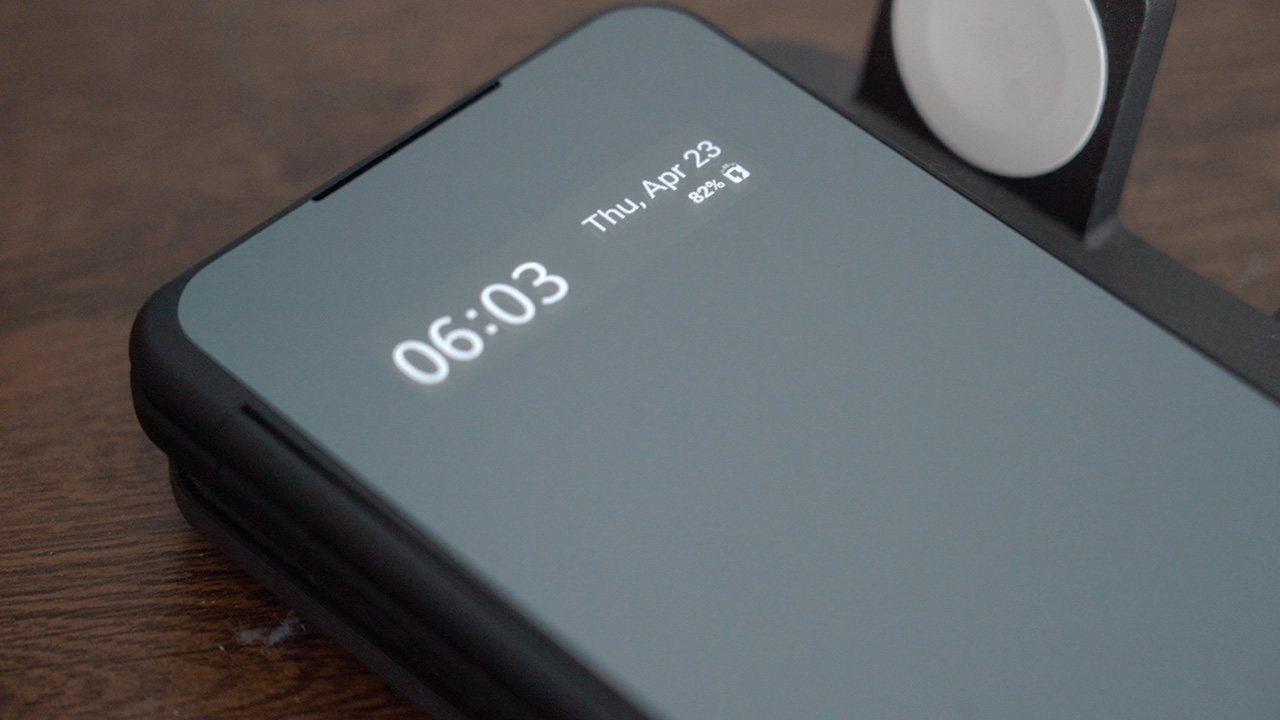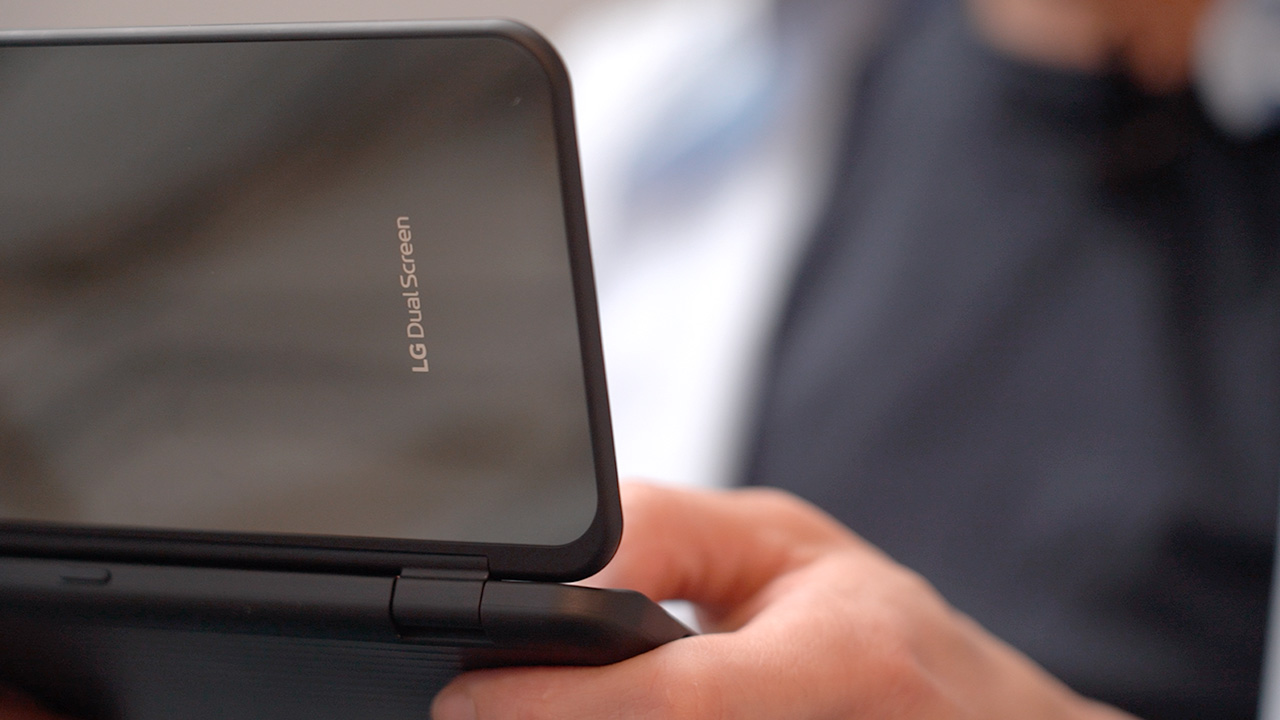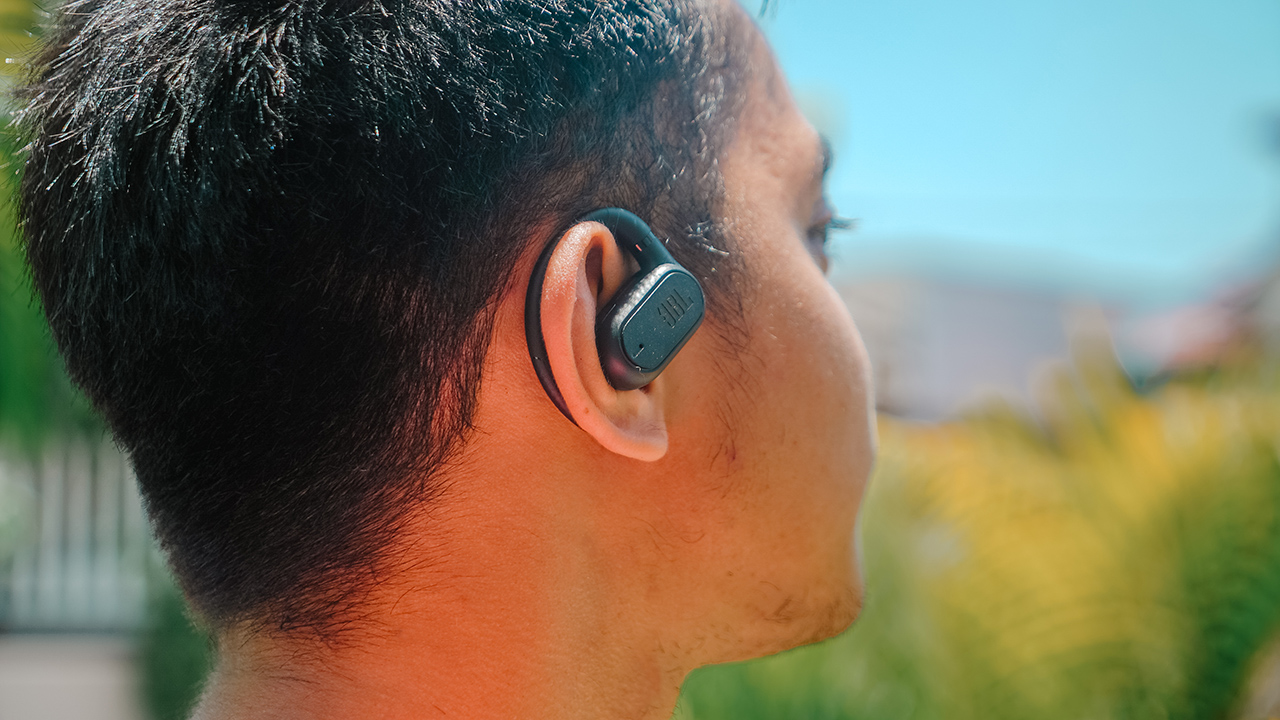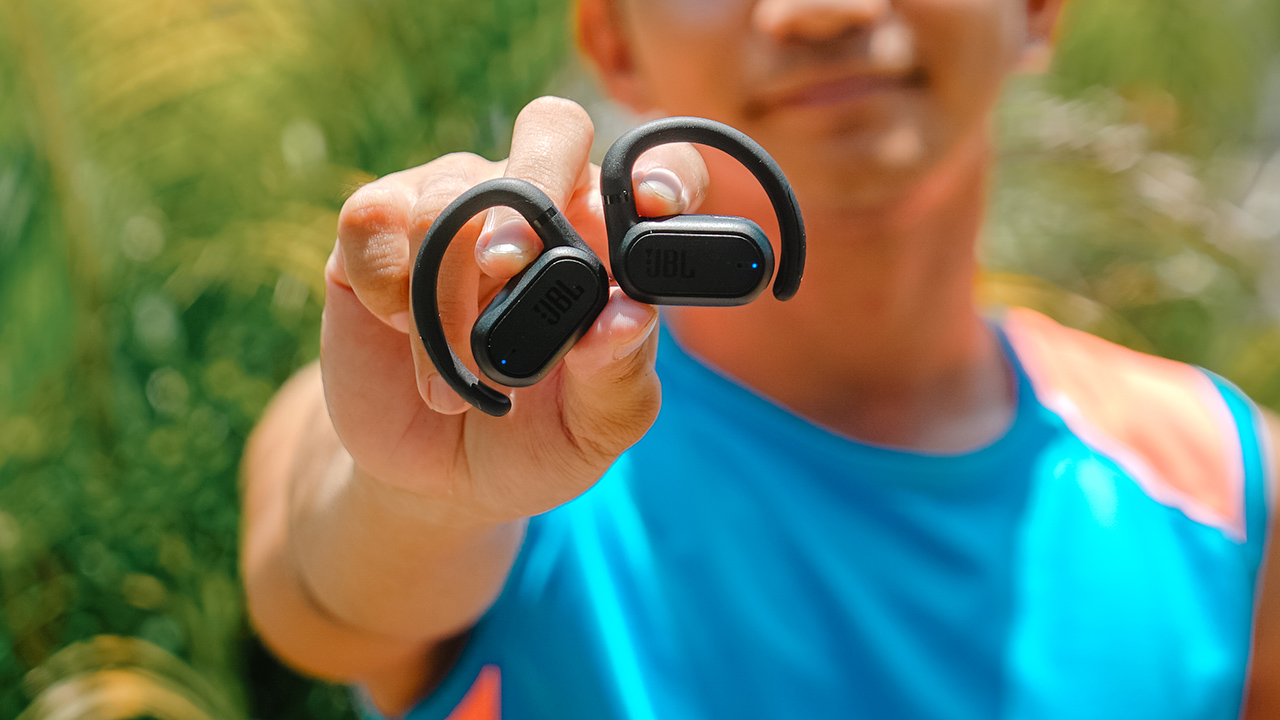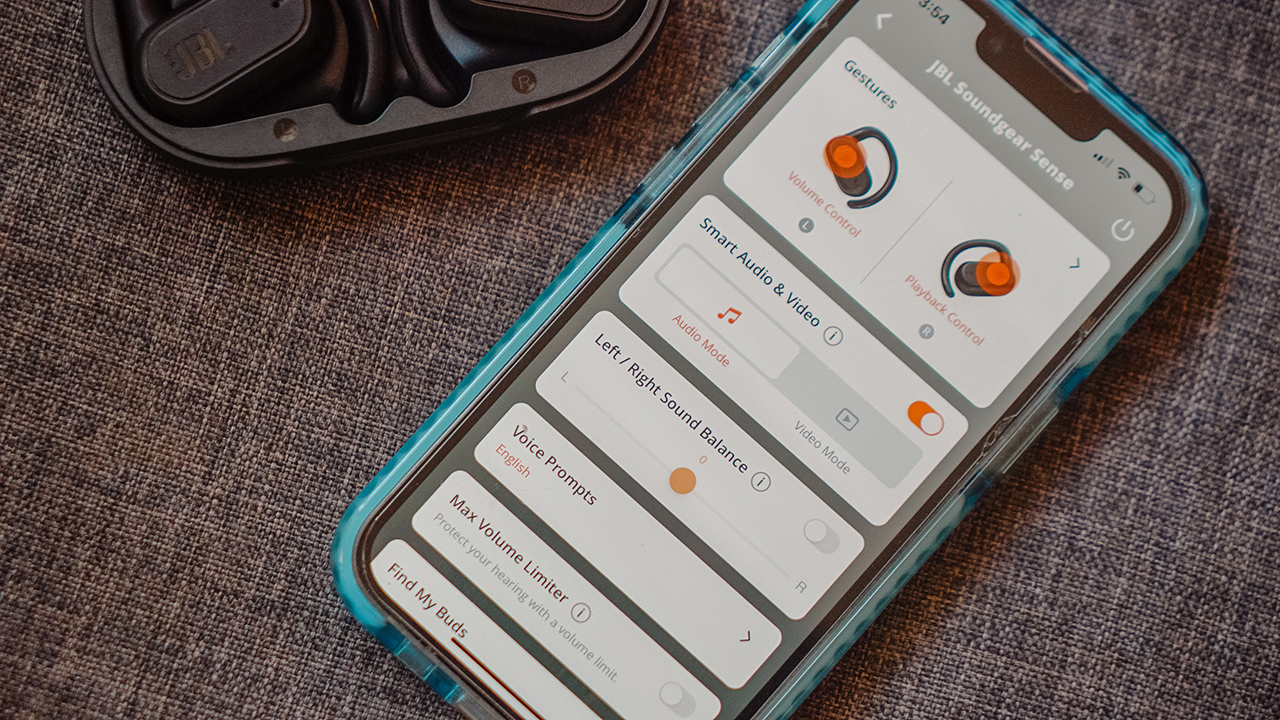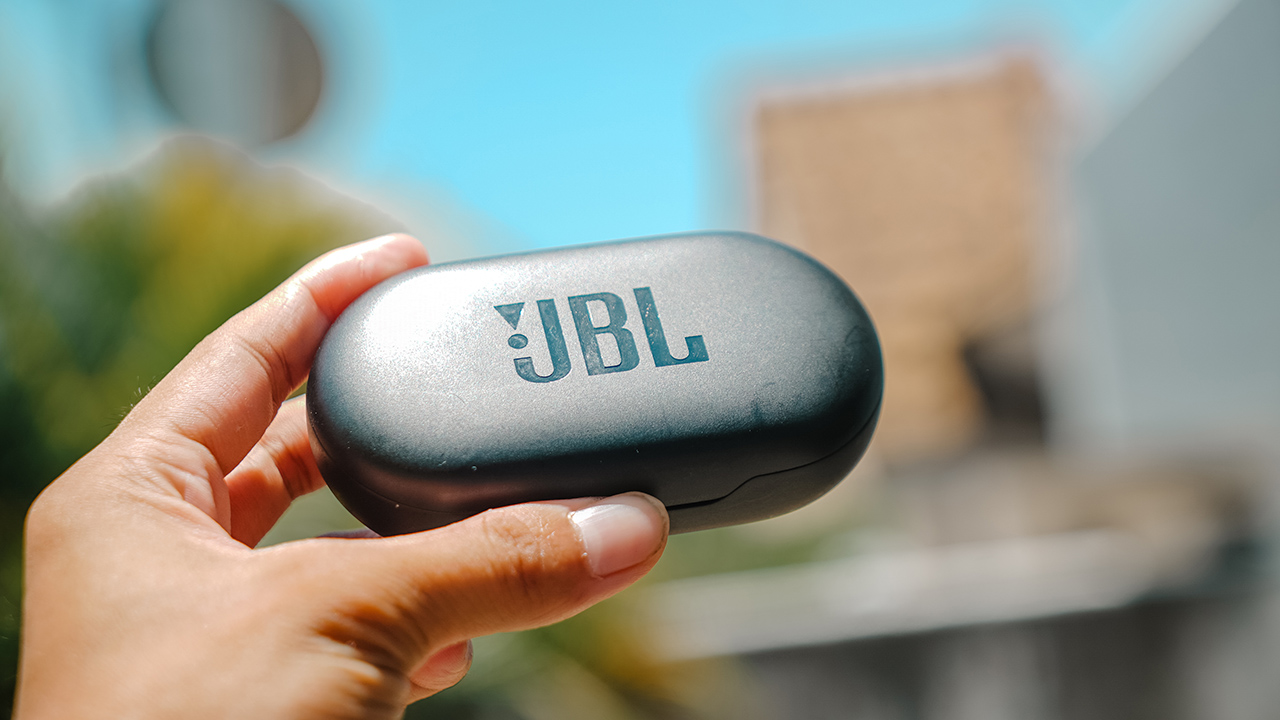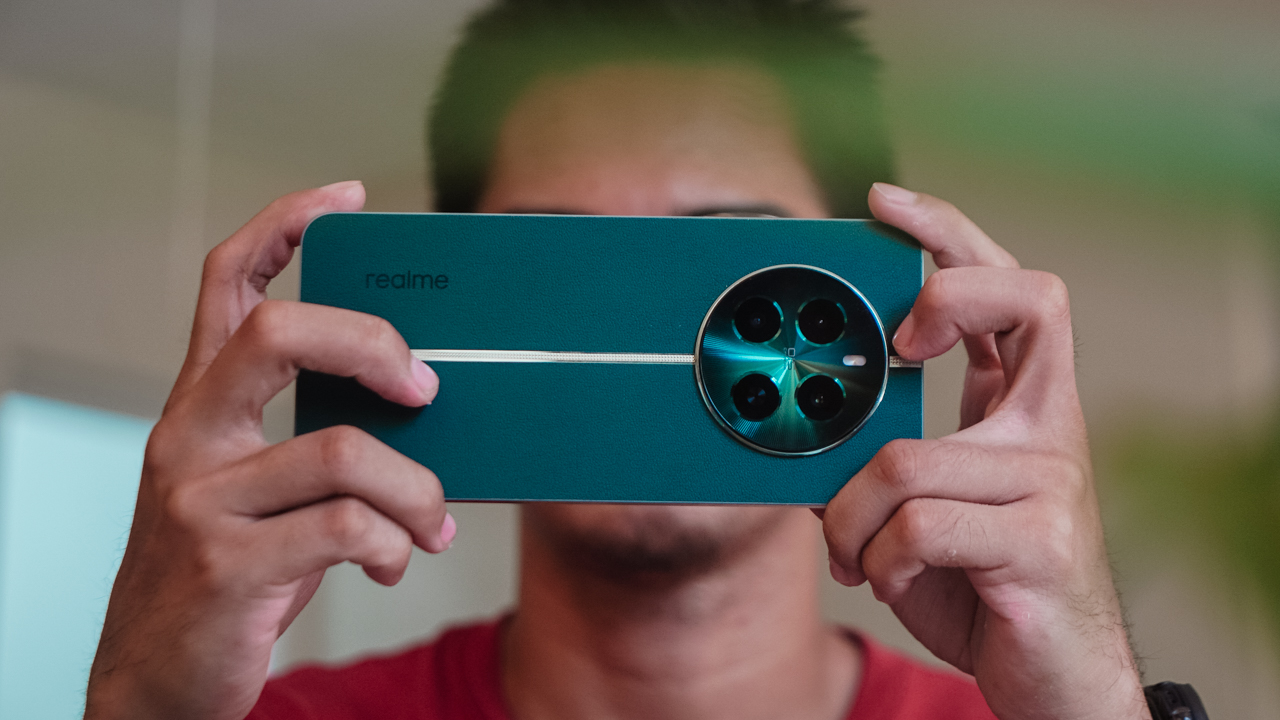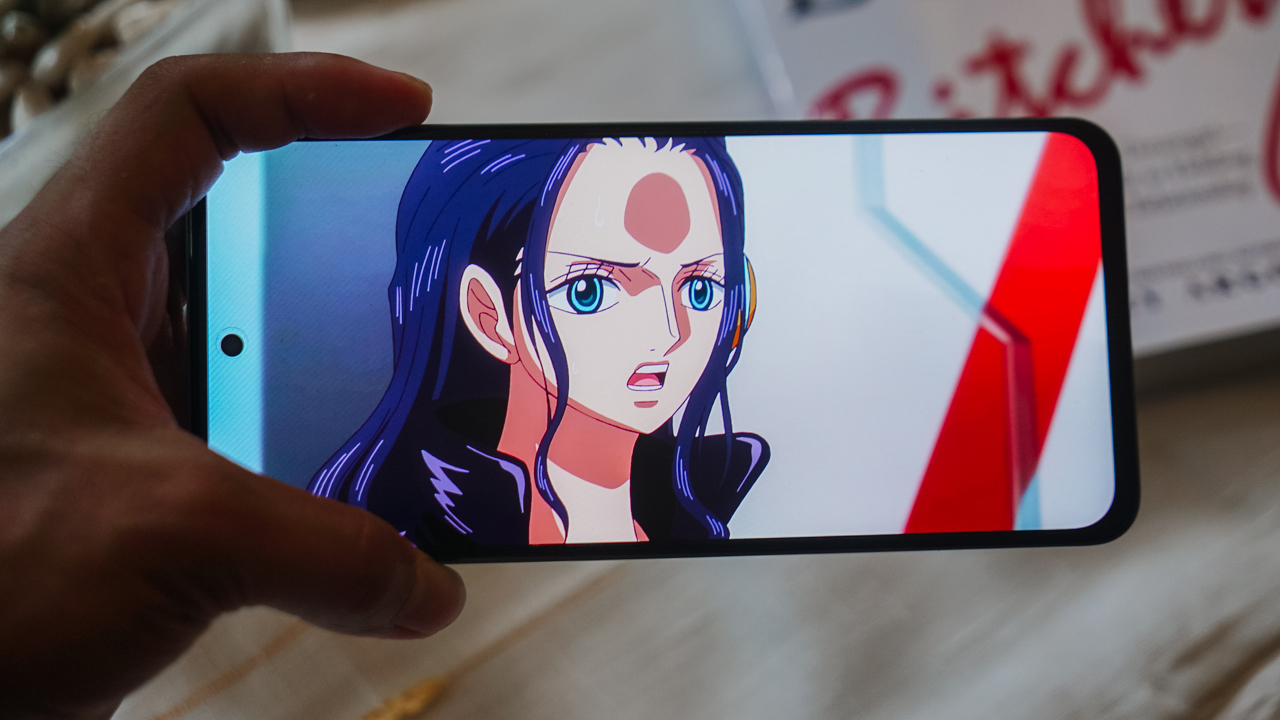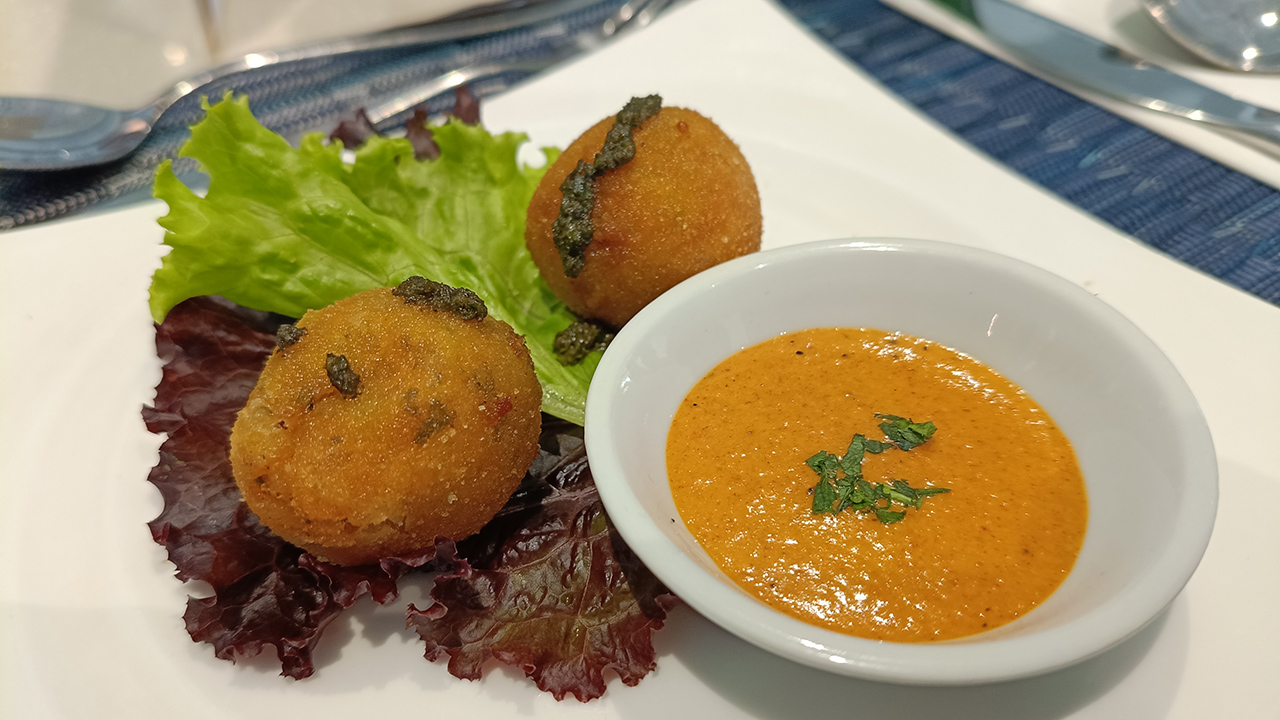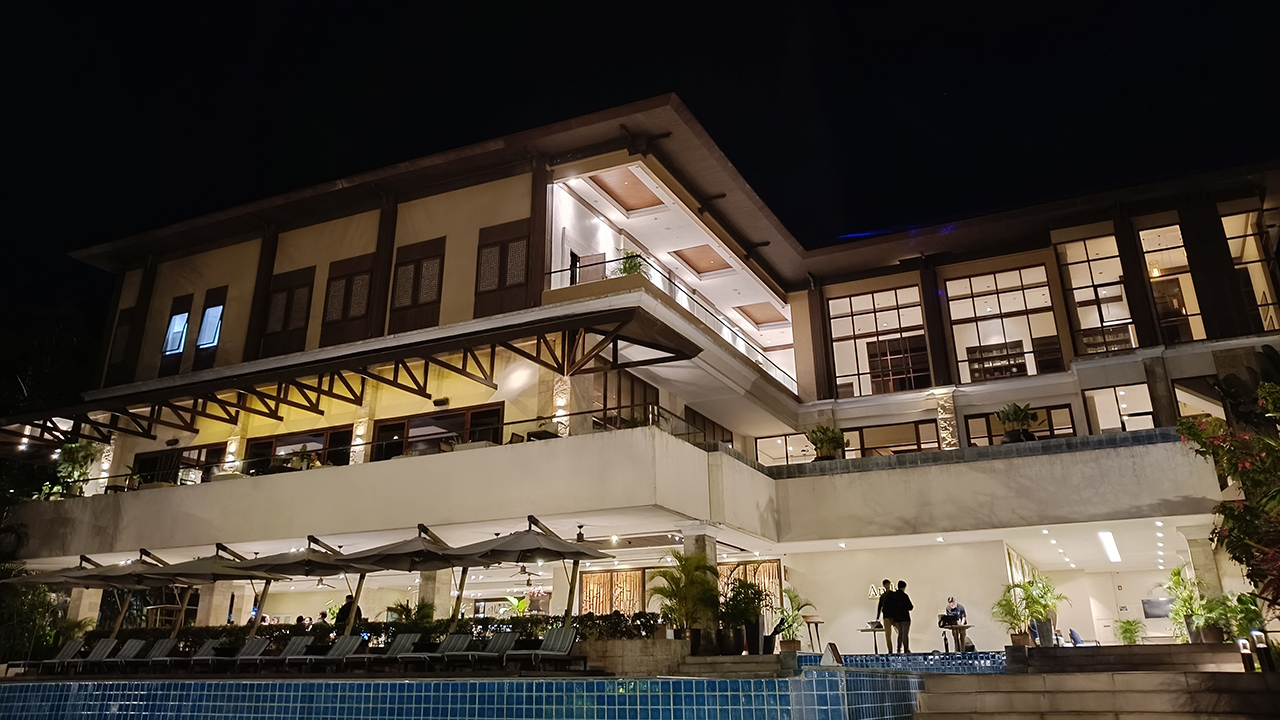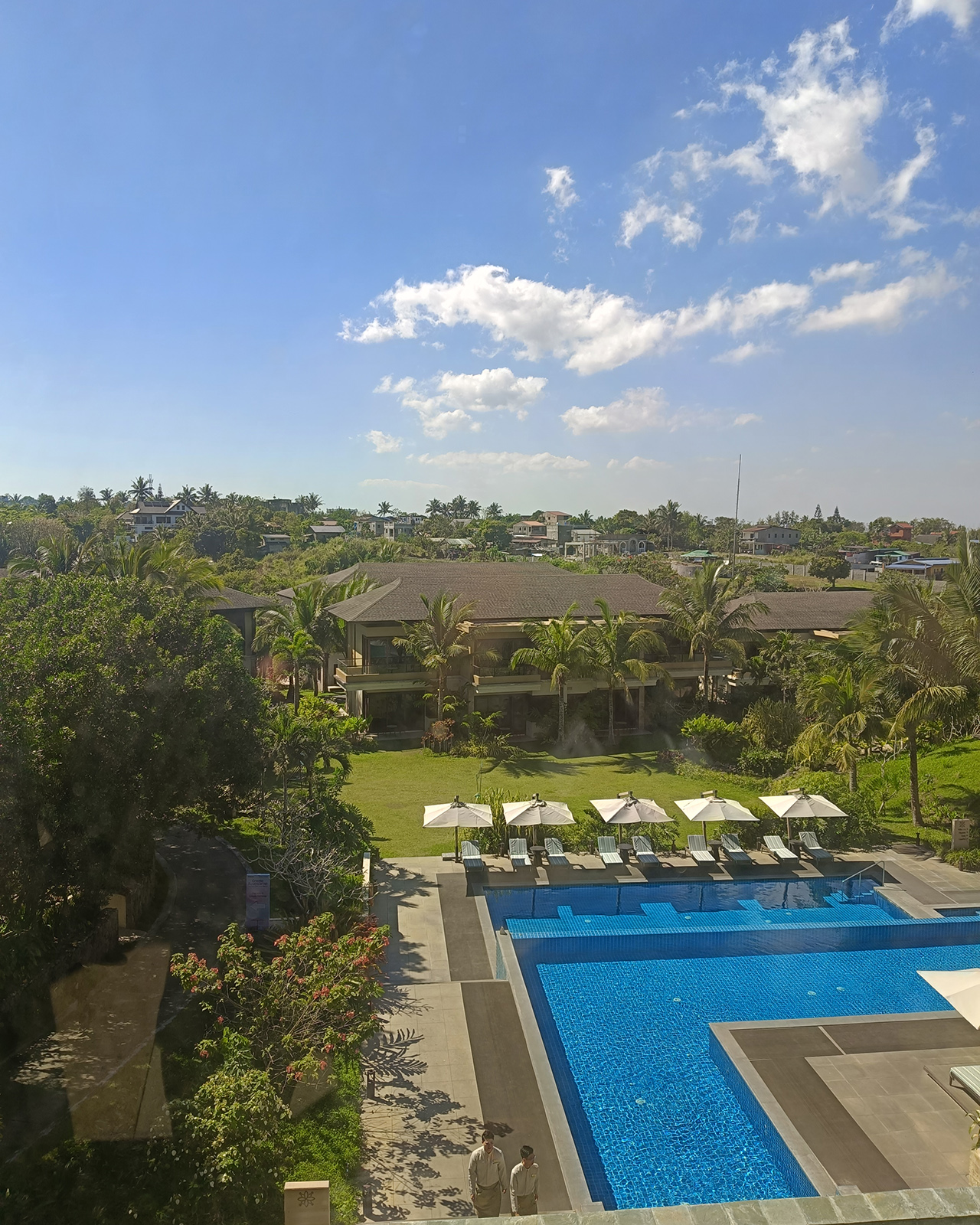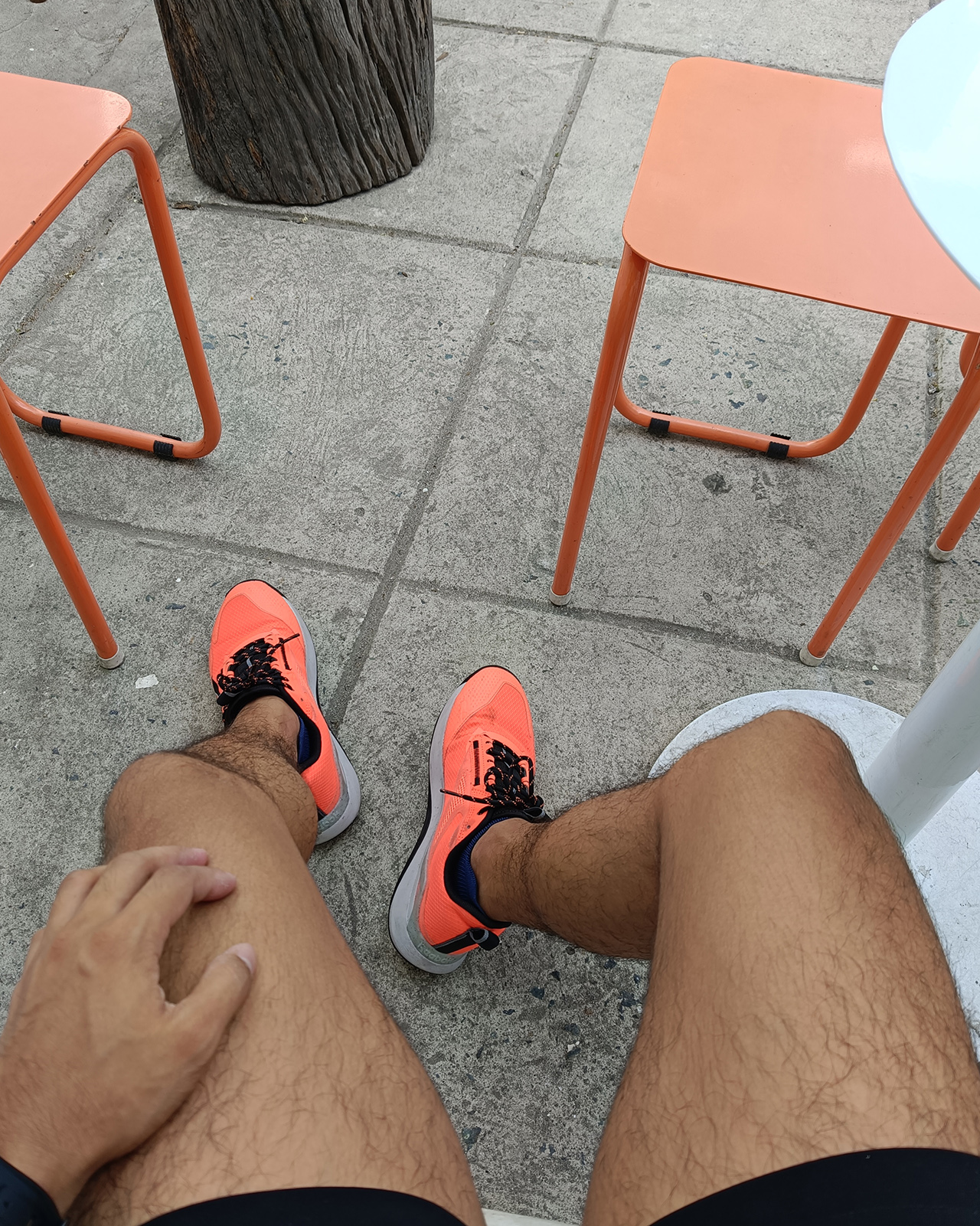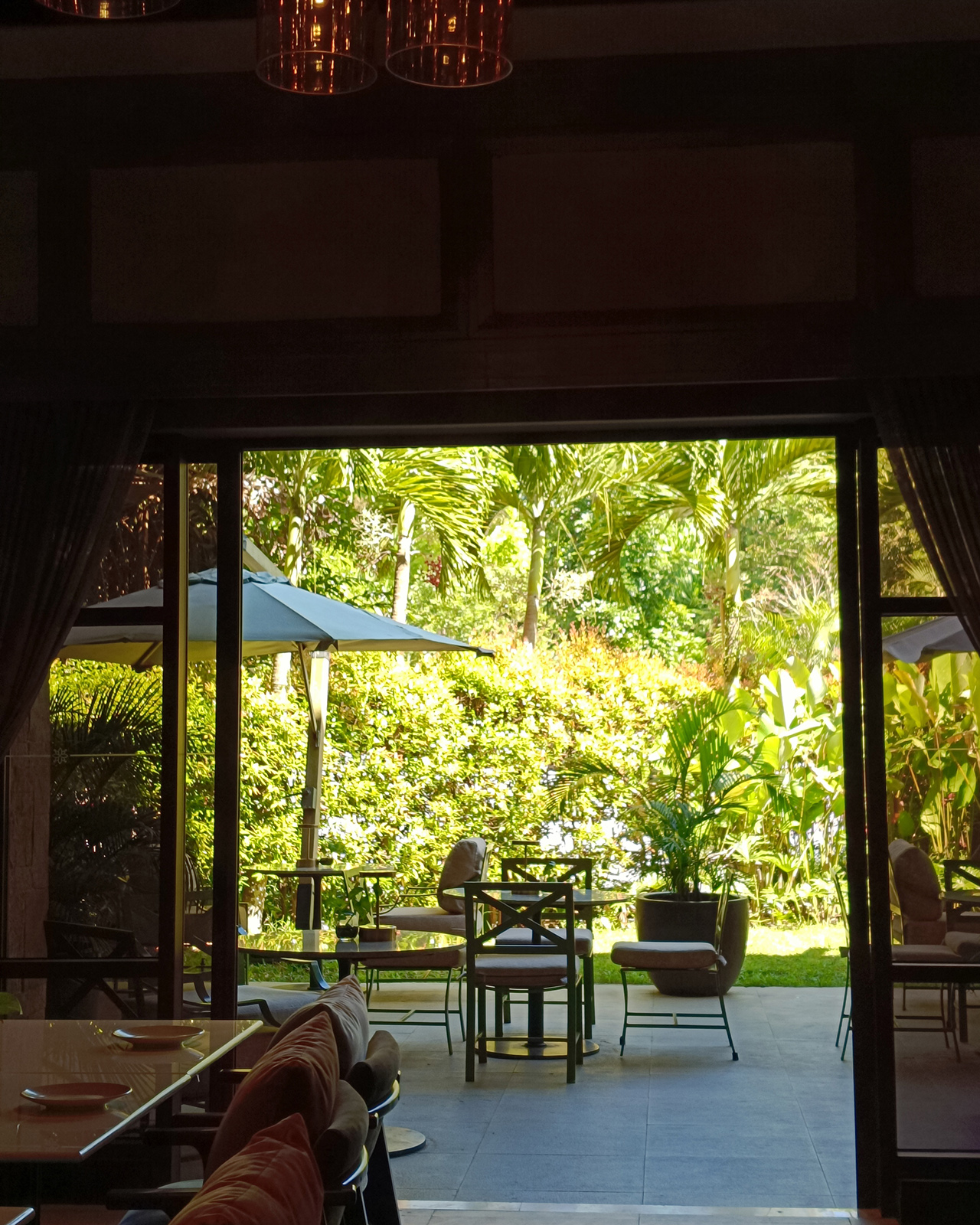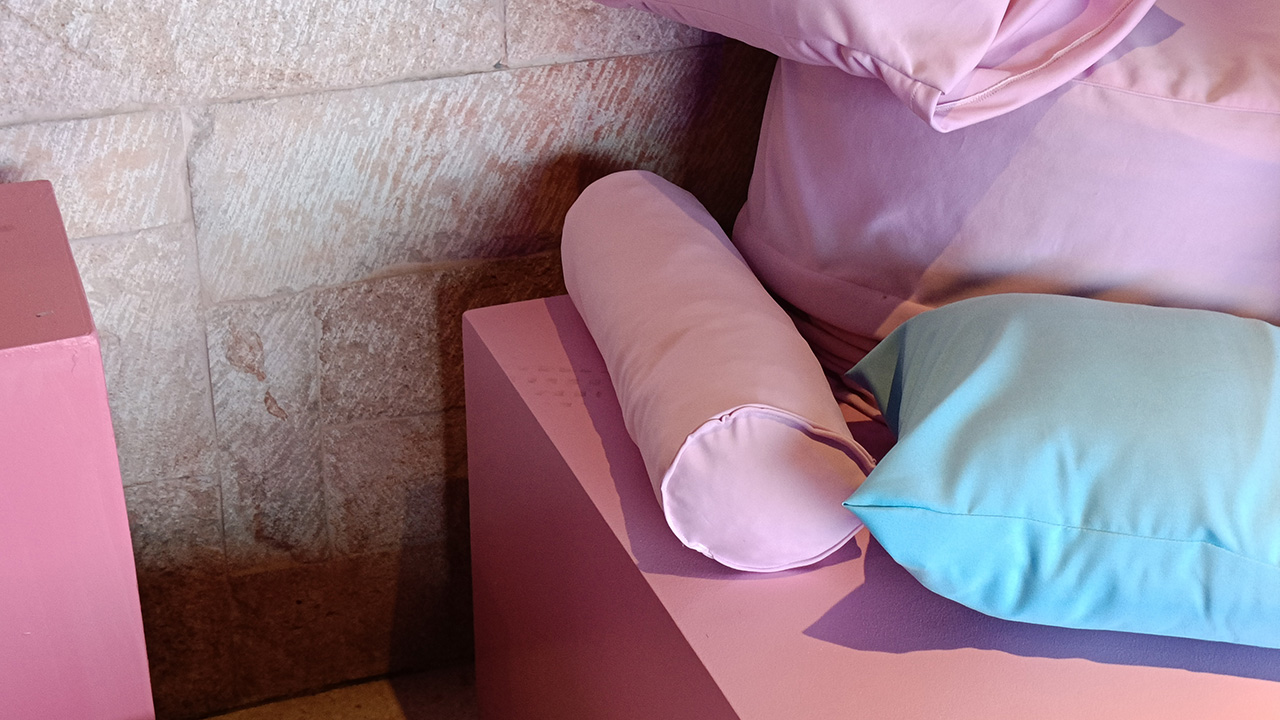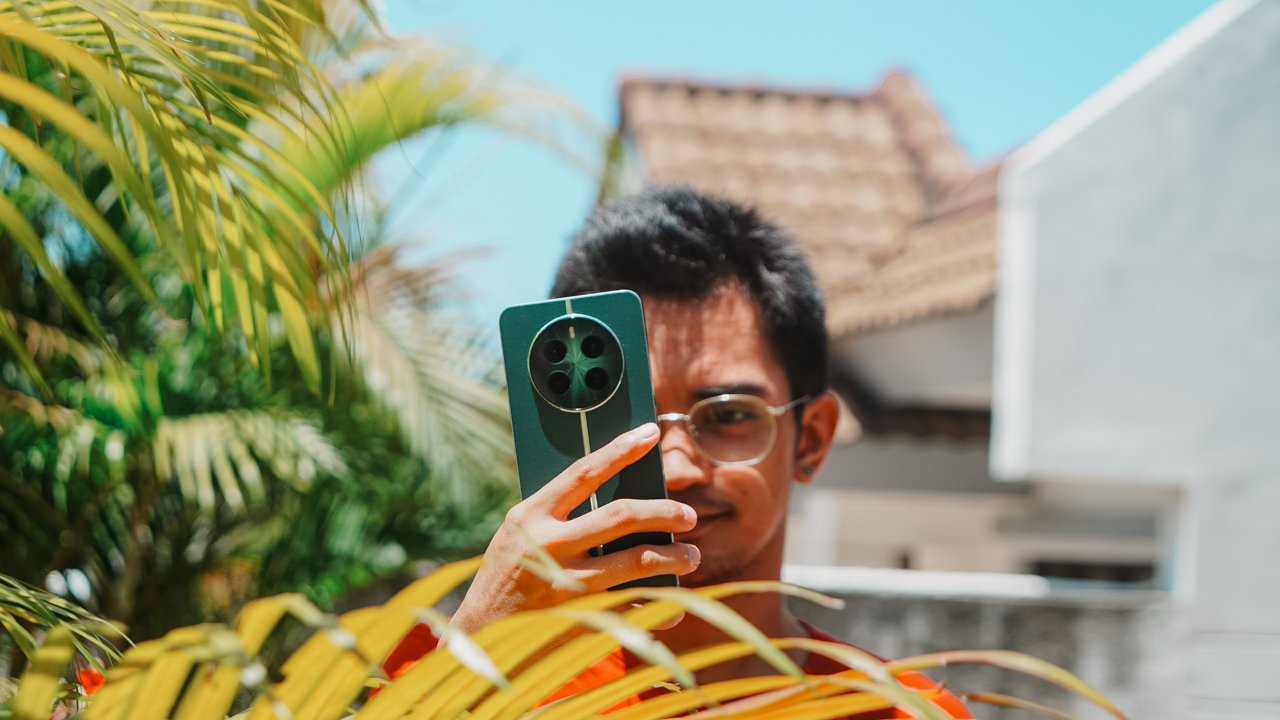

Reviews
LG V60 ThinQ 5G Dual Screen review: 2020’s most underrated phone
Zero gimmicks, plenty of practical features
Two months ago LG unveiled its third phone to come with the Dual Screen case. With foldable smartphones sold at a premium and Android flagship smartphones retailing for over US$1000, the V60 ThinQ has become a compelling choice, now more than ever.
The phone’s full name is LG V60 ThinQ 5G Dual Screen, but for the sake of brevity I will refer to it as the V60 from here on out.
Outdated but solid looks
The V60 comes in a rather large package. It’s one of the biggest phones we’ve had the opportunity of reviewing this year. Its size is not for everyone and I personally prefer smaller form factors.
Since it’s not pretending to be a pocketable phone made for one-handed use, I found that my behavior and habits when it comes to using a smartphone changed with the V60. I no longer hold my phone in one hand when I go out for a supermarket run and instead keep it in my tote. I found myself being less glued to the screen — no longer mindlessly scrolling Instagram and Twitter — and only picking the phone up when I do need to use it.
Size and heft aside, the phone looks and feels premium with its glass and metal build, chamfered edges, and light gold accents around the camera and around the phone. They are subtle but make a world of difference.
The phone also comes in Classy White, with silver accents.
Volume buttons and Google Assistant button are found on the left, while the power button is on the right. I had the Google Assistant button turned off from day one since I don’t use voice assistants but I really wish that this was remappable to something else.
I did turn on the option to open the camera by double pressing either the power or volume down button. I also turned on the option to launch Screen off memo by double pressing the volume up button. This way when I’m making coffee in the morning and find out I’m out of milk, I can quickly take note of it without getting distracted by the notifications on my phone yet.
There are four microphones, double the number than on its predecessors. Having four microphones allows you to record natural ambient sound from various directions. There is also a new feature called Voice Bokeh, that minimizes background noise and boosts the user’s voice. There’s also ASMR mode in case anyone finds that useful.
At the bottom there are speaker grilles, USB-C port, and a 3.5mm headphone jack! Just when you think brands don’t care, LG actually listens or at least they insist that it’s a feature that’s always going to be there.
While we’re on the subject, just like its predecessors the V60 still has Quad DAC support. This means you can enjoy high-quality sound closer to the original. It’s a shame our unit does not come bundled with headphones. I remember getting a pair of Bang and Olufsen headphones from LG flagships before.
“This has the most impressive battery life of a phone that I’ve ever used.”
When you turn the phone around, you’ll see that the phone looks nothing like a 2020 flagship smartphone. When you think of the best phones other brands have on offer this year, what they all have in common is a great emphasis on immersive displays that curve on the edges. Some even fold or unfold to become bigger devices.
For LG’s top of the line smartphone, that’s not the case. It doesn’t have a smooth refresh rate that every Android flagship we’ve reviewed so far has.
Even though it looks a bit dated and not eyecatching, I don’t mind the flat display, bezels, and the notch. None of those take away from the experience. It’s still a solid phone with a good display, just not the best one out there.
“More importantly, LG opted to let go of those rather gimmicky features so that it can keep the one feature that every other manufacturer seems to have compromised on this year: price.”
If Apple bringing back the iPhone 8 chassis in 2020 is any indication, not everyone needs a phone with new looks and the latest and greatest display technology can offer.
The Dual Screen I never knew I needed
Despite the display and design being ordinary by today’s standards, what sets it apart from competition is the Dual Screen case. If you’ve seen our videos on the V50 and G8X last year, you’d know that we are fans of the idea.
The huge 6.8-inch Full HD+ OLED display doubles when you use the Dual Screen case. You also get a third 2.1-inch Cover Display that shows the time and notifications. When you’re getting a call, it would show up here as well.
The back is more rugged than previous iterations. Its ridges reminds me of a Rimowa luggage.
Just like on a foldable phone where you get a phone that expands to a tablet for things like multitasking, there are many practical use cases for the Dual Screen. I enjoyed using it for every possible scenario and see myself using this form factor in the long term.
I typed more than half of this review on Google Docs while the phone is in what I’d like to call laptop mode. LG’s Smart Keyboard converts the phone into a mini laptop — when you move a document to the second screen by swiping three fingers, the keyboard shows up on the main display automatically as soon as you tap edit.
It’s obviously not an ideal or long term work setup. I made so many typos and probably took longer to write than I would have on a laptop.
When we first tried this on the V50 last year I thought it was just a cute novelty. Now, I think of it as a practical backup for when my laptop is about to die and I don’t have access to an outlet to charge. It’s also a good alternative when I’m flying economy and the tray table is too small for my 13-inch Mac — for when travel becomes possible again.
Of course you can always do all of this typing without the dual screen but I especially love that I can easily access the formatting tools that I use heavily when writing scripts.
Since the V60 screen is larger, typing also feels a bit more comfortable compared to the V50 and G8X. It would be a lot more comfortable if the keyboard was extended a bit more horizontally since there’s actually plenty of space on the edges.
If Microsoft Office is what you use, the Dual Screen supports that too. Creating Excel sheets is manageable and it allows you to open documents simultaneously, which is especially helpful when you want to make cross references.
Oh and because all of us are in quarantine, there is something for those who are having virtual meetings that will appreciate. You can use the V60 for your zoom meetings or happy hours like you would a laptop, while still being able to take some notes on the second screen if necessary.
One of my favorite features is one that’s also built-in on the LG Smart Keyboard. When browsing Instagram and Twitter, or reading an article on one screen, I can easily send a screenshot using another chat app on the other screen, without it every being stored on the phone.
I can always do this without the case, by taking a regular screenshot, switching between two apps, then attaching the screenshot but with it built-in, screenshots will cease from taking up space in my gallery and instead will go directly to their intended recipient. This feature is especially helpful since I am guilty of taking a lot of screenshots that always end up as clutter in my gallery.
There is also pen support for the V60 and the dual screen. Any Wacom AES pens will work for a more traditional note taking or document signing experience. This makes the V60 the only “foldable” to have pen support.
But enough about work and productivity, that’s not all I use my phone for.
For people like me, nothing beats holding and turning pages on an actual book. Since we’re in isolation and bookstores are closed, the Dual Screen is the closest thing I can get to that experience. Document reader app Librera can mimic that by splitting two pages on each screen.
When you open an e-book, use book mode and switch to two pages. You also need Wide Mode for LG, a third party app that you can get on the Google Playstore. This way you can have the view of two pages on both screens just like you would on a real book. More than anything, this is what I see myself using the V60 for the most.
The case also makes watching Netflix a lot more convenient. I can just prop it up like I would a laptop or put it in tent mode so I don’t have to hold it when I’m in bed. I do this as well when I’m catching Governor Cuomo’s daily briefings while having coffee in the morning.
When I’m cooking in the kitchen and following a certain recipe, I can have both the video and the website open at the same time.
I am the most casual of gamers, if I could even be considered one. For the purposes of reviewing the V60, however, I downloaded a lot of games so I can try Game Mode. This gives me a virtual joystick that I can customize whichever way I want to depending on the game I’m playing.
I used it on one of my childhood favorites, Street Fighter, and reached the fourth and final free stage — something I could never do without the virtual joystick.
With a little bit of tinkering, I was also able to replicate the Nintendo DS experience on the V60. With third party apps Drastic DS and Wide Mode, I was able to play games like the Legend of Zelda: Phantom Hourglass, Pokemon Diamond, and New Super Mario Bros.
Selfie monitor is perfect for Instagram boyfriends and girlfriends. Being single and in isolation, this is not something I was able to take full advantage of at the moment but I see myself using this when taking photos of my friends when we can travel again one day.
There’s also reflective mode, which changes the color tone of the second screen from white to warm. It acts as an additional light source when your selfies are a little too dark, which I’m sure SuperSaf will appreciate. 😝
Three lenses, zero gimmicks
Speaking of selfies and photos, the V60 has three rear cameras: A 64MP wide angle lens, a 13MP ultra wide angle lens, and a time of flight sensor. Up front is a 10MP selfie camera.
Now you’re probably thinking, where’s the zoom lens? Newsflash: unlike other Android flagships that have insane zoom capabilities, LG didn’t include a dedicated lens for it. Instead, when you zoom in, the V60 crops the 64MP image into a 16MP one.
Here’s what it looks like at 1x, 2x, 5x, and 10x.
Some of you would argue that ultra wide angle is more useful than an optical zoom lens so if you’re on the other side of that argument, you should look elsewhere; the V60 is not for you.
Otherwise the V60 takes great photos during the day outdoors and indoors.
I am a fan of the V60’s color reproduction. Oranges and reds on other smartphones tend to be oversaturated, but the V60 photos look as natural as possible and closer to real life.
The ultra wide angle camera, which LG first put on the G5 a few years ago, takes excellent photos as well.
At night the V60 also takes pretty good shots, especially when you switch to Night View, LG’s version of night mode.
Just note that when you take photos at night with the case on, it will create these line streaks from lights.
The front-facing camera also takes decent selfies as long as you have ample lighting.
Impressive battery life
The LG V60 comes with a huge 5000 mAh battery. That’s necessary because the secondary display actually draws power from it when it’s in use. When the phone’s battery is below 15% you won’t be able to use the dual screen anymore.
Battery life of course varies depending on usage; some apps just consume more juice than others. With the dual screen attached the V60 lasts an entire day of heavy use or about 9 hours of screen on time. That’s an hour of Netflix, Instagram, and Words with Friends 2, half an hour of YouTube, browsing, and reading Becoming using Librera, 2 hours of writing this review on Google Docs, and more.
Without the dual screen case, the 5000 mAh battery lasts more than 2 days — one time I got a whopping 12 hours of screen on time.
When it finally conked out, the bundled charger takes less than two hours to fully charge the 5000 mAh battery. The phone also supports Qi wireless charging and it works even with the case on. It’s just not as fast as those we’ve seen on the Mi 10 Pro and the OnePlus 8 Pro.
Needless to say, this has the most impressive battery life of a phone that I’ve ever used.
Disappointing biometrics
On a quick and more negative note, my biggest gripe about the V60 is its slow and unreliable in-display fingerprint scanner. This is also the only biometric security option available on the phone.
Is the LG V60 ThinQ your GadgetMatch?
First, let me get this out of the way: to my knowledge no other flagship smartphone has a 3.5mm headphone jack and Quad DAC support. So audiophiles, if those are important to you, the LG V60 is your GadgetMatch.
For everyone else, consider what’s important to you and your needs. LG did not included features that a lot of 2020 flagships are prioritizing like the edge to edge curved display, high refresh rate, and out of this world zoom camera capabilities.
The Korean company did, however, keep the things that other folks find to be essential: a big battery, the headphone jack, an ultrawide angle lens, water and dust resistance, and wireless charging.
More importantly, LG opted to let go of those rather gimmicky features so that it can keep the one feature that every other manufacturer seems to have compromised on this year: price.
You can get the LG V60 at US$ 799.99 from T-Mobile and US$ 899.99 if you want the Dual Screen case included. The T-Mobile version of the phone is optimized for Sub-6 5G networks, while Verizon offers the version optimized for mmWave networks which have faster speeds starting at US$ 949.99.
Do you need two screens? Nope. All of us can do virtually any mobile computing task on one slab of glass. You can do almost anything on the V60 too even without the case.
The add-on experience — the option to add a secondary screen, use your wired headphones, as well as a third party stylus — plus its top of the line specs, are things that you will not get from any other phone.
What you’re buying when you get the LG V60, is the choice to take your multitasking, productivity, and entertainment to another level whenever you want to.

Reviews
Challengers review: A thrilling drama wrapped as a tennis anime
Catch it in Ayala Cinemas starting April 24th

Tennis is more than just hitting a ball really hard with a racquet. There are player tics, serving techniques, mind games, and, of course, drama off the court. Challengers, starring Zendaya, takes the entire game and turns it into a dramatic thriller worthy of Wimbledon.
In Challengers, Art Donaldson (Mike Faist) is an aging tennis superstar desperate for one more big win. His wife Tashi (Zendaya), a retired tennis star in her own right, does everything to coach Art back to his winning ways. Opposite them is Patrick Zweig, a former-friend-turned-rival, facing Art in the final match of a Challenger.
As premises go, Challengers seemingly presents a straightforward sports drama. It’s a simple one-versus-one, after all. However, the film’s 2-hour-plus runtime hides a more complex drama.
The second-strangest ménage à trois in film
The film starts in media res: the first set of the final match. It doesn’t tell you who Art, Patrick, or Tashi is. It’s just a friendly match. There are, however, questions abound. Why is Zendaya’s character looking intently at one of the players? Why is the other player concerned that she is looking at his rival and not him? Who are these people?
Before you can ponder each question, the film takes you through multiple time jumps. The earliest (and longest) of which — thirteen years ago — sets up the story. Art and Patrick are two best friends and tennis prodigies teaming up to decimate the competition at their school. Everything changes when the two friends catch a match of another young prodigy, Tashi Duncan.
Both friends engage in a friendly competition to see who can successfully flirt with her. The sequence ends in the second-strangest ménage à trois committed to film. (To see the strangest one, catch Alfonso Cuarón’s Y tu mamá también, a clear inspiration to Challengers.)
The time jumps don’t end there. The story quickly volleys back and forth between different times in the past and the present, including years, months, weeks, and even hours ago. Sometimes, the skips result in the cinematic equivalent of whiplash from watching a tennis ball rapidly travel from left to right. But if you just follow the ball, it ends with one of the most thrilling, edge-of-your-seat dramas this year.
Blink and you’ll miss it
Despite how creative the time skips already are, Challengers shines with its subtler elements: the tiny movements, the tics that seasoned sports watchers can catch. Much like how a play-by-play commentator directs a viewer’s attention to what makes a player tick, the film subtly shows you elements of an even deeper story that it may or may not expound on.
Early on, Challengers shows a blink-and-you’ll-miss-it scene featuring Tashi’s knees. If you weren’t paying attention, you might have missed a scar from a surgical incision, hinting at why Tashi retired from the sport.
In that particular example, the film does dwell on it a bit in a past flashback. However, there are plot points that the film just drops on audiences with nary an explanation. For example, you might see telltale injection marks up Patrick’s wrist or a short-but-telling rehab session for Art. The film drops these nuggets only for the viewer to ponder. They’re short, but they paint a compelling picture to complement the action on the court.
It’s a tennis anime
In essence, Challengers is just about a tennis match between two emboldened competitors. However, like an anime battle that takes ten episodes to resolve, the film understands that the sport is not just about results: it’s about all the tiny movements, strategies, and dramas. If Wimbledon was this thrilling all the time, I should probably tune in a lot more.
Challengers shows exclusively in Ayala Cinemas starting April 24th.
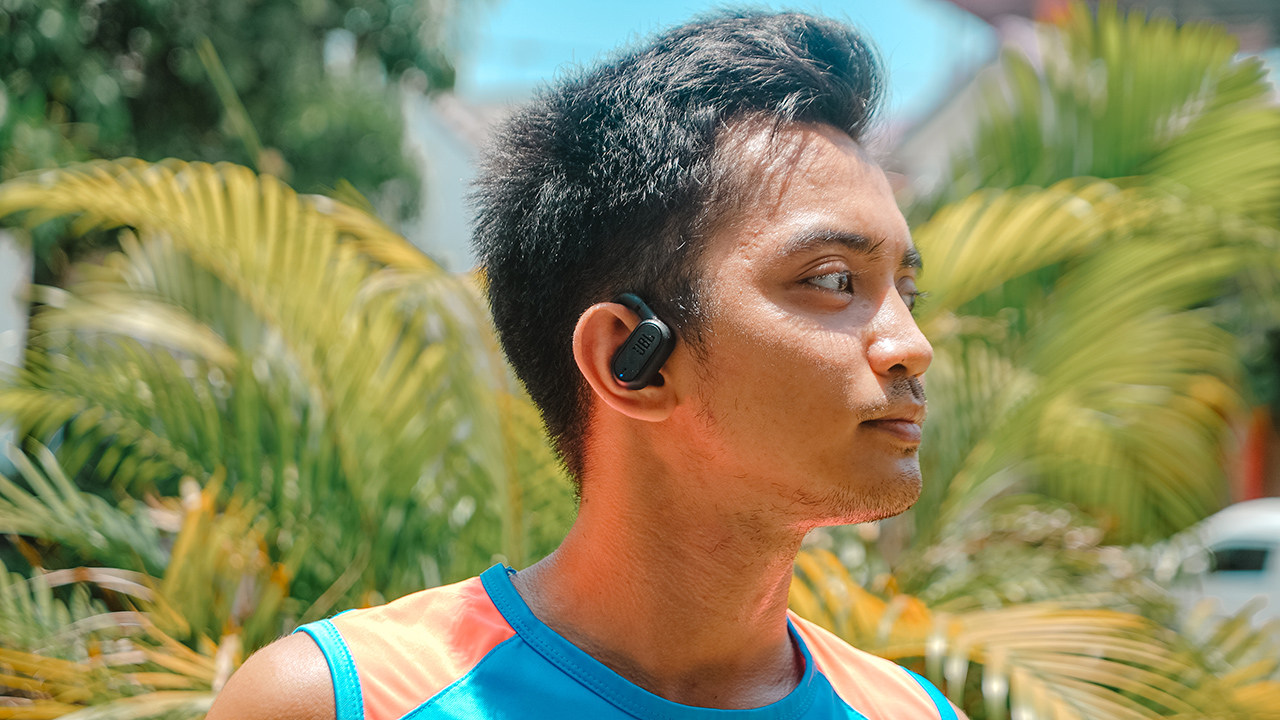
Running has been a form of meditation for most people. To some, it’s a time where your mind goes blank, allowing you to have a break from your stimulated mind.
For others, like yours truly, it’s a moment to sort out thoughts and emotions after having a preoccupied day. A common denominator between runners is doing the activity alone, accompanied only by their smartwatches, a hydration flask, and good music.
I’ve been using true wireless earbuds to accompany me on my runs, but the advent of JBL Soundgear Sense piqued my curiosity.
What is it like to use open-ear headphones when out for a run? To find the answers, I used the Soundgear Sense during my ongoing race season.
Take the long way home
As I put on mileage for my upcoming races, I have been required by my coach to add more slow runs to improve my aerobic base. That entails long, boring runs for an hour or two.
Imagine the agony of finishing a minimum of 10-kilometers by relying on your heart rate and not your pace. That was when I sought solace from the JBL Soundgear Sense.
I didn’t realize that having open-ear headphones would allow me to take on scenic and busy routes without worry that a car might hit me.
Unlike when I use true wireless earbuds that fit snugly in my ears, the Soundgear Sense are hooked and clipped on the curve of my ears without covering the ear canal.
This allowed me to hear my surroundings while still enjoying my favorite songs from Taylor Swift and BINI, a rising P-pop girl group.
Open but still private
Even if the Soundgear Sense has an open-ear design, rest assured that there’s zero sound leakage. JBL’s OpenSound technology made sure that the sound pressure is directed through waves towards the ears, while also reducing sound dispersion.
There’s a certain shame in having people find out whom you’re listening to. Maybe because you don’t intend to share the music you’re enjoying. But if you opt to share your jam, might as well have a Bluetooth speaker, right?
That’s why I liked the idea of keeping it open but still private — in relationships and my wearable. I get to enjoy “Pantropiko” and “Salamin, Salamin” by BINI all by lonesome, while still attuned to my surroundings.
It also helps that each earbud has a 16.2mm driver with a unique bass-enhancing algorithm. The sound allowed me to immerse myself in the songs I was playing, but still aware of the external noises of the streets. Somehow, the Soundgear Sense felt like a second, inner voice whispering thoughts through music.
Hybrid design for hybrid athletes
I don’t just run. I also lift on the same day right after running. Being a hybrid athlete allows me to prepare my body from the demands of multi-sports training and partaking on a Spartan race.
I like how the Soundgear Sense has a hybrid design that makes it apt for different type of workouts. Its adjustable earhooks are clipped perfectly, which doesn’t fall off even when I’m doing plyometrics. It’s also steadily in place even if I sprint and/or do some speed training.
Even when I’m heavily sweating, the Soundgear Sense didn’t slip off. With an IP54 rating, it’s dust-, splash-, and sweat-resistant.
Also, the way it’s designed is secured to fit on whatever activities you have, regardless of sweating. Except gymnastics and parkour, though.
The Soundgear Sense might fall off after you hang or flip from those extreme activities that require being suspended in the air.
For added security, there’s an included neckband inside the box. However, I hate having something dangling on my nape so I never used it.
Moreover, I couldn’t last more than an hour having it clipped even with a supposed hybrid design. It hurts my ears eventually, and I feel like someone was pinching my ears and I couldn’t do anything.
If I have runs for more than an hour, I’d opt not wearing both earbuds.
Easy connectivity
One thing I like about JBL is how easy it is to connect your wearables to your smartphones, be it an iPhone or an Android.
Once both devices are paired, flipping open the case will instantly connect the Soundgear Sense to your smartphone.
While running, I don’t have to constantly check my phone since the Soundgear Sense, along with my Garmin epix Pro (Gen 2), helps me stay connected. With just a single flick on the earbud, I can control my music, volume, and calls.
My friend, Betty, called me one time while I was out for an easy run and she barely realized I was running until I gasped for my breath when running on a steep incline. It’s convenient to have crisp and crystal-clear calls within your reach.
And to make it more convenient, the touch controls can be personalized to your liking. On the left earbud, it’s usually the volume control.
One tap and it increases the volume, while double tapping decreases it. When someone calls, you can double tap to respond or you can tap and hold to reject the call.
The right earbud uses the same call control, but it’s automatically set for playback control. You can switch earbuds depending on the gesture you prefer.
All of these customizations can be done using the My JBL Headphones app.
Definitely long lasting
I have had the Soundgear Sense for two weeks now, and both earbuds still have a half battery life from a single charge. As of writing, the left earbud still has 51% while the right earbud has 56%.
Thanks to its charging case, both earbuds keep recharging every time they’re stowed inside.
But if you’re wondering why the left earbud has a lower battery life, it’s not because I spend too much time watching adult-rated content.
A lot of times, I run with just the left earbud clipped on my ear to stay alert from my surroundings. Even with OpenSound technology, I tend to get lost in the music I’m listening to whenever I have both earbuds hooked.
Considering I’ve amassed more than 70km of running mileage for two weeks with almost 10 hours of running, the Soundgear Sense surprised me with its battery life.
I haven’t charged it since then, which made me wonder how fast it would really be, if I get to drain it down to zero and juice it back up to 100. Perhaps, stay tuned on my Instagram and TikTok accounts?
The Soundgear Sense is expected to let you listen wirelessly for up to 6 hours. You get an extended life of another 18 hours through the charging case. A quick 15-minute charge through the Type-C port gives an additional 4 hours of music.
Is this your GadgetMatch?
For an athlete, the JBL Soundgear Sense surely makes every run magical. The design and technology were innovated with runners in mind. The device integrates seamlessly to any type of active lifestyle.
It will boil down to preference, whether you enjoy an open-ear design clipped onto your ears or you’d enjoy an earbud blocking your ear canal.
As for me, I think I’ll switch and pick the Soundgear Sense to accompany me in my race season. It helps me immerse myself in good music, stay connected, while keeping me attuned to my surroundings. This ensures my safety when out for a run.
It’s easily a GadgetMatch for all types of athletes dedicated to fulfilling their training assignments. It’s also for fitness enthusiasts entering their “runnerist” era.
The JBL Soundgear Sense retails for PhP 9,499. It is available via JBL’s website and select, authorized retailers.
Reviews
realme 12+ 5G review: One month later
What is it like to spend a month with a midrange smartphone?

What is it like to spend a month with a midrange smartphone?
For someone spoiled with high-end, flagship smartphones, a watered-down experience terrifies me. I couldn’t fathom using just a midrange smartphone, even if I’m counted as a casual user.
But spending a month with the realme 12+ 5G gave me a new perspective on what midrange smartphones at 2024 can do.
Powerhouse at a fraction
A lot of times, I’ve used the realme 12+ 5G to play Mobile Legends: Bang Bang. I know, I know. It’s 2024 and I’m still playing the same old MOBA but it’s a game I know all too well that helps me de-stress after a long day.
See, I’m an athlete balancing my work and life. Sometimes, I just want to rot in bed while playing on my phone.
The realme 12+ 5G helped keep me sane thanks to its lag-free gameplay. Not once did I feel any heat or slowing down even while playing in an Ultra Graphics and Super High Frame Rate setting.
The Vapor Chamber Cooling System came into play, dissipating the heat so even if under heavy usage, the gameplay is still optimal.
Moreover, the realme 12+ 5G uses a MediaTek Dimensity 7050 chipset. When you combine this with a 12GB dynamic ram that’s expandable through your storage space, you won’t have to worry about a watered-down experience from using a midrange device.
The RAM can take up from 4GB up to 12GB to be re-allocated from the 256GB internal storage. Though, I only used 4GB since I didn’t feel the need to turn it up to the highest configuration. It’s already smooth even when multi-tasking.
It may not be as smooth as the flagship smartphones I held, but it’s enough particularly for people who just needs a smartphone they can use for their everyday lives. However, if you want a midrange device dedicated for an even more intensive gameplay, I’d suggest looking elsewhere.
Daily companion for viewing, listening
When I was on my way home from my training, I drove past a busy road in Pasig City where vendors are in the streets, bystanders are frolicking, and loafers gossip while taking space through the plastic stools they sat on spread out near the sidewalk.
What do they have in common? Smartphones. There was a realization that the Filipino masses rely on their devices to be entertained and connected.
I have a feeling that if I wasn’t a multi-passionate person with an insanely hectic schedule, I’d bury my head on a smartphone, too.
This is where having a spectacular audio-visual performance comes into play, especially for budget and midrange devices. Luckily, the realme 12+ 5G has a 120HZ Super AMOLED Display and Dual Stereo Speakers.
It’s one of the reasons why I started playing Mobile Legends: Bang Bang again when I was decompressing for the day.
Aside from doomscrolling on TikTok, I just like it when the display is fluid, vivid, and smooth while the audio can be as loud and immersive. Unlike most midrange smartphones, the audio-visual performance is always a hit or miss.
Sometimes, they have an excellent screen while the audio suffers, or vice-versa. The realme 12+ 5G just have it both.
Capture it, remember it
The realme 12+ 5G uses a 50-megapixel SonyLYT 600 OIS Portrait Camera, an 8-megapixel 112° wide-angle lens, a 2-megapixel macro sensor, and a 16-megapixel selfie camera on the front.
I used the smartphone to capture photos I send to my loved ones. From selfies, coffee runs, hotel visits, group photos, food shots, and just anything and everything in my life.
The quality for low-light shots is a hit or miss, but for photos taken during daytime and with good lighting? It’s just spectacular.
Here are some sample photos to look at:
Portraits & Selfies
Food
Sceneries
Everyday photos
Real on reliability
The realme 12+ 5G’s battery capacity is just *chef’s kiss*.
Its ability to retain its battery life even on standby is just incredibly helpful for someone who keeps forgetting to charge his devices.
The realme 12+ 5G lasts long enough when out for the day, and even if you spend a lot of hours playing games and doomscrolling.
One time, I played Mobile Legends: Bang Bang for three hours straight from a full charge, and I still had enough juice to keep playing. That 5000mAh battery surely is a lot of juice that doesn’t drain easily. I had to be the one to give up playing since it hurt my eyes already.
Charging it with 67W SuperVOOC, the realme 12+ 5G gets full charge in less than an hour. This is why even if I forget to charge it at night, I just have to plug the charger in the USB-C port while I was taking a bath and prepping for work.
Could’ve been a real premium
Aside from its performance and capabilities, the realme 12+ 5G comes with a strong and beautiful exterior. The unit I have came in Pioneer Green, resembling an emerald-touch of old money.
Without a plastic case, it’s soft, feels luxurious, and easy to hold even with a boxy frame. At a glance, it’s even more beautiful with its luxury watch-inspired design, thanks to designer Ollivier Savéo.
For a midrange device, realme has a knack for making its devices look and feel sophisticated. Furthermore, it’s dust and splash proof with its IP54 rating. It’s a win-win, right? Strong and pretty at the same time.
My only issue would be the realme UI 5.0 based on Android 14 that’s packed with bloatware. Look- and feel-wise, the realme 12+ 5G would be a premium stunner, even with its camera, audio-visual, and battery performance.
But the UI design along with the unnecessary bloatware made it cheap and annoying to look at.
Is this your GadgetMatch?
The realme 12+ 5G delivers what you’d expect out of a midrange smartphone. It’s premium-looking, long-lasting, offers reliable performance, and captures vivid portraits and pictures.
It’s easily a GadgetMatch for casual users requiring enough power and juice on a device that looks pretty and strong. If the realme 12 Pro+ 5G is a midrange marvel, consider the realme 12+ 5G almost the same, but at a lesser cost.
It retails for PhP 19,999 for the 12GB+256GB variant, while the 8GB+256GB unit is priced at PhP 17,999.
-

 Accessories2 weeks ago
Accessories2 weeks agoApple Vision Pro Review: Two Months Later
-

 Features5 days ago
Features5 days agoFortify your home office or business setup with these devices
-

 Gaming1 week ago
Gaming1 week agoThe Rogue Prince of Persia looks like an ultra-colorful roguelite
-

 Events1 week ago
Events1 week agoStellar Blade: PlayStation taps cosplayers to play Eve for game’s launch
-

 Gaming1 week ago
Gaming1 week agoStar Wars Outlaws release date revealed
-

 Accessories1 week ago
Accessories1 week agoLogitech unveils G Pro X 60 gaming keyboard: Price, details
-

 Philippines2 weeks ago
Philippines2 weeks agovivo Y100 to release in Philippines on April 27
-

 Deals2 weeks ago
Deals2 weeks agoSamsung Awesome April: Deals on Galaxy A series





